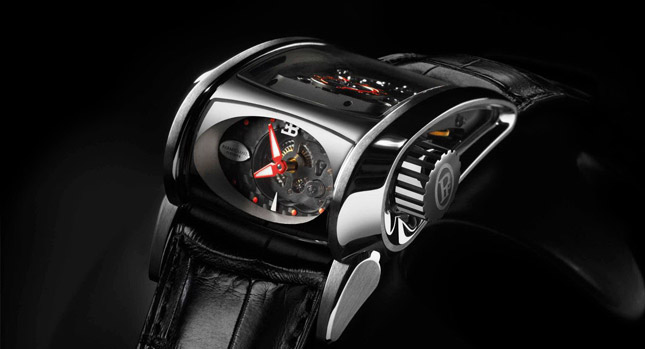A red and white McLaren and a bright yellow-helmeted driver behind the wheel storming down the track is one of the images that defined the 1980’s-era of Formula 1.
The driver was, of course, the late Ayrton Senna. And the watch he wore was always a TAG Heuer, something that made many young fans of the most charismatic driver the world has ever seen yearn for one.
 The Swiss brand continues its partnership with the Woking-based F1 team, making sure that Lewis Hamilton and Jenson Button flash their timepieces at every opportunity.
The Swiss brand continues its partnership with the Woking-based F1 team, making sure that Lewis Hamilton and Jenson Button flash their timepieces at every opportunity.
On the other hand, the most famous, if not really the most exclusive or expensive watchmaker in the world, Rolex, has linked its name not only with the late actor, racing driver and Indycar team owner Paul Newman, but also sponsors and big names, many major events after its most coveted model, the Daytona chronograph.
Cars and timepieces share many characteristics. For one, they come in all shapes and sizes and their price range from cheap to “if you have to ask, you can’t afford it” category – and everything in between.
Furthermore, while some people simply view them as a mechanical device built to satisfy a need, transportation and telling the time respectively, and don’t care about the inner working parts, others have a totally different approach.
They appreciate the shape, the complex workings inside and the feel of both. There are also those who simply view them as a status symbol, a means of displaying their wealth.
Perhaps they just want a matching Jaeger LeCoultre to go with their Aston Martin or a Breitling to look at its knurled bezel and think about their Bentley’s controls when they are not driving it.
Watchmakers and car companies are very well aware of the connection between their products. Some carmakers have even tried to make their car’s instruments look like chronographs (Lexus with the IS200) or even sport a watch by a high-end manufacturer in the dashboard (Bentley).
This practice works the opposite way, too: TAG Heuer has developed the V4, a limited edition of square Monaco chronograph that was made famous by Steve McQueen in the 1971 Le Mans movie, inspired by cars’ belt driven engine parts.
Moreover, nearly a decade ago, it resurrected the Carrera name that alludes not to Porsche, as you might expect, but the Carrera Panamericana race of the 1950s that took place in Mexico. Many variations are currently available, with the Grand Carrera being the most distinctive piece.
Porsche, which offers a Chrono package in its models and has its own luxury items brand, Porsche Design, has also entered the timepiece market with the P6000 series.
The world’s most famous car brand could not be absent from our list. Ferrari, which has licensed its Prancing Horse logo to a range of items, from computers to shoes, has been one of the first to collaborate with high-end watch makers.
Girard-Perregaux was one of the first to make Ferrari-branded watches, and then Maranello decided to leave the Swiss company and collaborate with its compatriot Panerai, and currently has also returned to Switzerland too work with another high-end watchmaker, Hublot.
Perhaps the most unusual example, which makes even the Carrera V4 look ordinary by comparison, is another timepiece inspired by Ferrari: it is the Scuderia Ferrari One that is made by Geneva-based Cabestan.
It’s true that, if you’re used to normal watches you may find it difficult to tell the time by looking at its three engraved aluminum rotary bands. On the other hand, Cabestan’s creation, contrary to other manufacturers’ practice, lets you see its intricate innards from the front, and is quite a remarkable sight.
The same holds true for the Parmigiani-Flerieur Bugatti Super Sports. And even though we’ve so far avoided to name prices, which usually vary according to the country or even the retailer, the Bugatti watch certainly bears a price tag that befits a Veyron owner: US$259,000…
VIDEO
PHOTO GALLERY




































